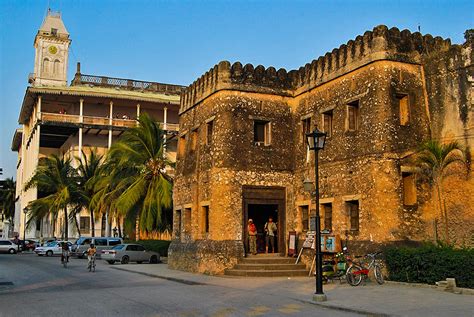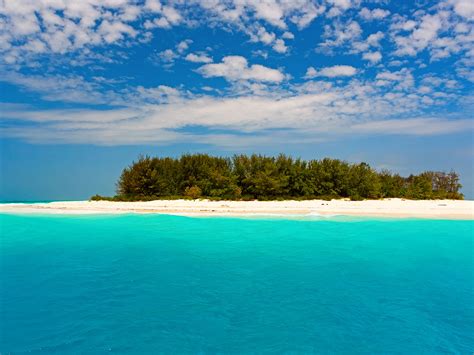The Spice Island of East Africa
Zanzibar, an enchanting archipelago off the coast of Tanzania, is a tropical paradise known for its turquoise waters, white sandy beaches, and rich cultural heritage. Often referred to as the “Spice Island,” Zanzibar has a fascinating history as a historic center of the spice trade, blending African, Arab, and European influences. The island’s main island, Unguja (commonly known as Zanzibar Island), along with its smaller neighbors like Pemba, offer travelers a unique blend of relaxation, adventure, and cultural exploration.
Zanzibar’s history dates back thousands of years, shaped by trade routes that connected it with the Middle East, India, and Africa. This has resulted in a unique cultural fusion seen in the island’s architecture, food, and traditions. Stone Town, a UNESCO World Heritage site, is the historic heart of Zanzibar and showcases the island’s heritage with winding alleys, bustling bazaars, and centuries-old buildings featuring intricate Arabic carvings and colonial influences.

Stone Town
- Overview: The cultural and historical center of Zanzibar, Stone Town is a labyrinth of narrow streets, ancient mosques, and markets, each corner steeped in stories from the past.
- Highlights: Visit the Old Fort, House of Wonders, and the Sultan’s Palace; shop for spices, jewelry, and textiles; and experience the bustling Forodhani Gardens night market for authentic street food.
Pristine Beaches
- Overview: Zanzibar is famous for its idyllic beaches along the coastlines of Nungwi, Kendwa, Paje, and Matemwe. Each offers powdery white sands, crystal-clear waters, and an atmosphere perfect for relaxation or water sports.
- Highlights: Enjoy snorkeling, diving, kite surfing, or simply lounging under the sun. The coral reefs around the island provide some of the best underwater exploration in East Africa.


Jozani Forest
- Overview: Jozani Chwaka Bay National Park, home to the rare red colobus monkey, is the only national park in Zanzibar. It’s an excellent destination for nature lovers and a place to experience Zanzibar’s lush mangrove forests and unique wildlife.
- Highlights: Take a guided tour to spot red colobus monkeys, explore mangrove boardwalks, and learn about the forest’s conservation efforts.
Mnemba Atoll
- Overview: A protected marine reserve just off the coast of Zanzibar, Mnemba Atoll is renowned for its vibrant coral reefs, making it a popular spot for snorkeling and diving.
- Highlights: Swim among colorful fish, sea turtles, and even dolphins. Mnemba Atoll is a paradise for underwater enthusiasts.


Spice Farms and Tours
- Overview: Known as the Spice Island, Zanzibar has long been renowned for its spice plantations. A spice tour allows visitors to learn about the island’s role in the spice trade and experience the aromas of cloves, nutmeg, cinnamon, and vanilla.
- Highlights: Tour spice farms, taste fresh spices, and see how they’re cultivated. This is a wonderful way to immerse yourself in Zanzibar’s agricultural heritage.
When to Visit Zanzibar
The best time to visit Zanzibar is during the dry season, from June to October and December to February, when the weather is sunny and warm. These months provide ideal conditions for beach activities and exploring the island. The rainy seasons (March to May and November) bring lush landscapes, but travel conditions can be affected by rainfall.
Related Package's
Whether you’re drawn to the island’s history, its pristine beaches, or its warm, welcoming culture, Zanzibar offers a captivating escape. From the cultural richness of Stone Town to the sun-drenched beaches and vibrant coral reefs, Zanzibar has something for every traveler.
Safari & Beach 10 days
Zanzibar is so much more than the sun and sea… Though the beaches are wonderful and relaxing, we also would like to show you more of the island, its people, history and culture.
Safari 8 days
The Serengeti Migration is not just about numbers—it’s a journey steeped in tradition, survival, and struggle.
is proudly powered by WordPress